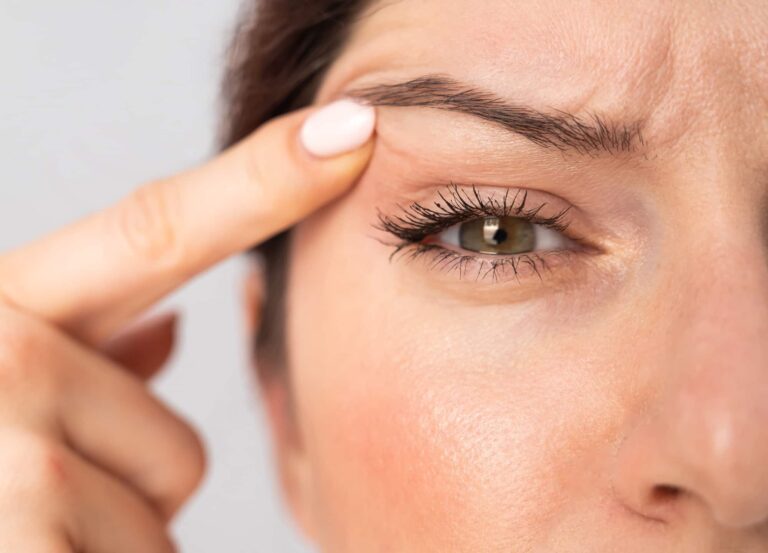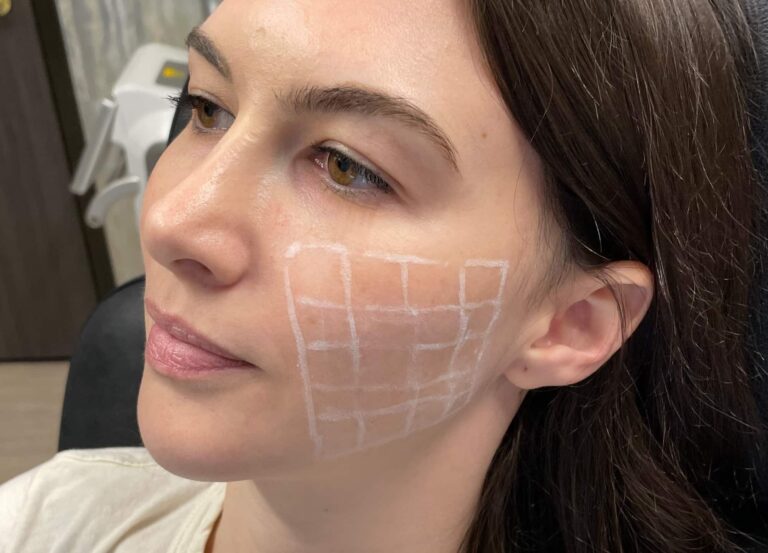Generally speaking, inflation is a natural aspect of economics. As labor, real estate, and other operating costs increase, so do the prices of pretty much everything, from a carton of eggs to a bottle of sunscreen and, yes, plastic surgery procedures too. According to statistics that were recently released by the American Society for Aesthetic Plastic Surgery (ASAPS), the average price of a facelift nationwide in 2021 was $9,127 (excluding the anesthesia and operating room fees). That’s up 3% from 2020 and up nearly 30% from just five years ago.
Then there are the providers commanding more than 15 times the national average.
“At the high end, a facelift in New York today can cost $150,000,” Wendy Lewis says. Lewis has been working exclusively in aesthetics for more than two decades: she formerly acted as a consultant to private clients, helping them find providers or treatments; today, she’s the founder of a global aesthetics agency working with providers and companies. In her entire career, she says, she’s never seen fees like this until recently, citing the evolution of marketing within the field of plastic surgery. “We’ve changed from a word-of-mouth industry,” she explains. “Reading about ‘the best guy for faces’ in a magazine isn’t relevant anymore. You go online.”
The MDs who’ve mastered Instagram have created feeds that are often so magnetic, it can feel almost impossible to look away. Informative and digestible reels, bursts of personality, and practically mind-blowing before-and-afters have caused some surgeons to skyrocket to legitimate celebrity status. “If a provider isn’t active on Instagram, they’re going to be invisible to a large percentage of the population of patients looking for the services they provide,” says Lewis. But though the work of plenty of high-end providers merits their booming success, as any pop culture junkie can tell you, not all idols are worthy of the hype.
There will always be luxury goods and services, plastic surgery included; understanding what you’re paying for and why is the key to a successful procedure. Here, we dive into exactly what can affect the pricing of plastic surgery, whether it’s considered ethical for MDs to charge more, and exactly how to know if the price tag on your provider’s procedures will reflect the quality of your outcomes.
What affects the pricing of plastic surgery procedures?
Before we get into how social media is causing prices to rise, it’s worth breaking down the standard factors that can cause prices of a procedure to fluctuate. One of the greatest is location. Costs of living are higher in major metropolitan areas, which will increase provider expenses (after all, they have to pay rent too) as well as draw a typically wealthier clientele. “In Beverly Hills, we’re in a higher economic stratum, if you will,” says Dr. Roy Kim, a board-certified plastic surgeon with practices in San Francisco and Beverly Hills, California. He is also a member of the social media subcommittee of the American Society of Plastic Surgeons (ASPS).
“California was always higher than New York,” adds Lewis, pointing out that L.A. was “the seat of cosmetic surgery” for many years, which caused the area to produce exceptional—thus typically pricier—surgeons. RealSelf members share that, in their experience, the average cost of a facelift is about $12,000, with the higher end being approximately $29,000. According to Lewis, however, providers in Beverly Hills have been able to command $100,000 for years, while until recently, highly skilled doctors on New York City’s prestigious Park Avenue were charging half that price. “But there are a lot of world-class surgeons in any major city,” she reminds us.
Beyond the expenses of being in a big city, as the price of everything increases with inflation, you’ll see that reflected in the bills for plastic surgery procedures. “Cost is established with an understanding of the resources,” explains Dr. Danny Soares, a board-certified plastic surgeon in Lady Lake, Florida. “[These] involve not just consumable materials, tools, and equipment for that procedure but also the cost of the surgeon’s time, practice liability/risk, facility overhead, and level of personnel involved,” he explains.
For example, Dr. Soares has expanded his facelift technique; this complexity has increased his amount of time spent operating by 50% to 100%. Incorporating pricey technology to further enhance his outcomes—including fractional CO2 laser resurfacing and perioperative hyperbaric oxygen therapy—has also necessitated higher prices. “The level of quality and the costs associated with providing it are the main factors dictating the price tag on the facelift,” he says.
These aren’t unreasonable factors in changing prices and, often, are indicative of a skilled and reputable surgeon. “The reality is that a quality surgeon will cost more than a surgeon who is trying to cut corners or sell a quick product,” explains Dr. Soares. We all know that plastic surgery procedures are never one-size-fits-all and while one operation may be more straightforward than another, all require attention to detail to ensure safe and satisfying results.
And the results of plastic surgery are in higher demand than ever. According to those stats from ASAPS, the number of operations performed across nearly every single procedure has increased significantly—e.g., combination facelift procedures are up 149%. From Lewis’ perspective, COVID-19 invigorated a desire to get work done. “We all changed [during the pandemic],” she said. “People I know who wouldn’t previously have gotten plastic surgery now say, ‘I want to do this now,’ or ‘I don’t want to die without having this done.’” Factor in a cult social media following clamoring for a slot on the surgical calendar, and you’ll see an even greater demand.
After raising his prices for the first time (more than a decade after completing his fellowship) in 2016, Dr. Amir Karam, a board-certified plastic surgeon in San Diego, began to raise his prices on a more consistent basis—every few months, he says. “Locally, we’ve always had a very high-demand practice due to being so specialized [with our facelifts],” he explains, and historically, he’d always been booked out about three months. With the effects of COVID and a booming Instagram following (his follower count on Instagram currently tops 275K), Dr. Karam suddenly found himself completely booked a year in advance.
“It all sounds really good, but it’s actually a little stressful,” he admits. “How am I going to plan my life that far ahead?” As a dad of four, Dr. Karam worried about how his kids’ lives would factor into such a tight surgical schedule, not to mention finding time for unforeseen issues, like dental emergencies. To better control his schedule, he adjusts his prices. “It’s the only way you can offset some of the demand,” he says, adding that he performs a strict, specific number of procedures a week, which does not change with patient demand. Dr. Karam assesses his schedule every few months, and if he sees that it’s gotten out of control, he raises his prices again.
Dr. Karam is applying the law of demand, something you might have learned in Econ 101: when a good or service is set at a higher price, the demand for it decreases. But not all providers ascribe to this philosophy. “Demand doesn’t factor into my pricing at all,” says Dr. Gerald Imber, who has been practicing for more than two decades. “It’s medicine—I don’t really treat it like a business.” Even though his practice and surgical suite are on the Upper East Side, in one of New York’s ritziest neighborhoods—and he’s always felt that his fees were very high—Dr. Imber is finding they’re some of the lowest in town. “It’s a relative value scale and I love what I do, and I want not to drive people out of the market,” he says.
Similarly, Dr. Soares and his team work hard to keep their prices close to the national average, despite the high quality of the work offered—to remain accessible to the majority of patients, not just the wealthier ones. “Ultimately, how a practice approaches their pricing in light of increased demand reveals the value that they ascribe to their patient pool,” he says. “Increasing prices can neglect a large proportion of the very patients who have helped that practice succeed.”
In some cases, a steep fee may not be indicative of high demand or popularity at all—it could be a marketing ploy designed to create intrigue or hype. Dr. Imber recalls a provider he once knew in Los Angeles who claimed to charge $100,000 for a facelift. “Most of the time, he wasn’t even working,” he says. It could also be rooted in ego. “There is some competition amongst plastic surgeons, ’How much do you charge? How much money are you making?’” says Dr. Kim. “As long as you’re happy, fulfilled, and making money, who cares?”
Are significantly steeper procedure prices “fair”?
When it comes to the prices of goods and services, the concepts of fairness or worthiness are entirely subjective. In many cases, it’ll come down to your lifestyle. ”A Timex and a Rolex both tick the same time,” Dr. Kim points out. Lewis likens pricier plastic surgeons to couturiers: “They’ve spent years of their life training, have experience, and have built their brand—no different from Christian Dior or LVMH,” she says. “They’re high-end brands, and their prices reflect that.”
And certainly, a provider who delivers high-quality work should be able to charge more. “There’s so much nuance, so much person-by-person detail that goes into a surgical outcome,” says Dr. Karam. He shares that how a provider applies prior learning to new situations, to create consistently beautiful results, can’t be taught. “It only comes from a combination of technique, talent, and experience,” he says. “There are tons of plastic surgeons people can go to, but for those who are in a position to want the best for themselves, there’s a category for those as well.” Though Dr. Imber feels many surgeons are inflating their prices, he agrees that skill is paramount. “It’s really an art, and you just have to hope that, deep down inside, they’re honest, decent people and they’re trying to do their job well,” he says. “If they’re getting paid twice what I am, well, good for them.”
Cosmetic surgery is also entirely elective—it’s your decision to do it all, let alone if you want to pay steeper prices. “I don’t have any problems with people charging as much as they want—it’s a totally nonessential service,” says Dr. Kim. “If you want to spend that money on a procedure because it’s got prestige, by all means, that’s your prerogative.”
As nonessential as it is, it’s still medicine. For many, this raises the question: Are high procedure prices ethical? “As long as patients are being provided with an itemized quote that is transparent, I believe surgeons can, reasonably ethically, bill as they see fit, just as patients can shop around for a cheaper surgeon,” says Dr. Soares. “However, the special issue relating to charging very large sums for standard procedures, or ‘predatory billing,’ does invoke medical ethics and has to do with two unethical practices relating to false advertisement—claims of professional superiority and lack of procedural transparency.”
Because of social media’s ability to turn anyone into a celebrity, it’s easy for followers to believe that doctors with obsessive followings offer outcomes that are superior to those of all other MDs. “If a provider charging exorbitant amounts is achieving top-tier results, they are not creating good results due to some unheard-of treatment—they are simply providing quality outcomes through skill, time commitment, and the use of established, quality techniques that are done by many other surgeons,” says Dr. Soares. “The cultivation of a ‘cult personality’ as it relates to surgical outcomes contradicts the transparent approach that is a pillar of medical care.”
And in many cases, the emotional desire to achieve these seemingly exclusive results can cause patients to make illogical financial decisions. While it’s absolutely a patient’s responsibility to manage their own finances, Dr. Soares feels that it’s also important for doctors to look at their own fees. “In medicine, under the Hippocratic oath as medical providers, we have the duty to ‘first, do no harm,’” he says. “The question, then, is whether billing inordinate sums for conventional procedures would consist of failing to safeguard the patient’s interests, medical or financial.”
“What worries me is the patient who really goes into serious debt, because she feels she has to go to a famous doctor,” says Lewis. She recalls a woman she met in passing who made approximately $40,000 a year, who excitedly shared her decision to fly across the country for an abdominoplasty with an Instagram-famous MD. “The doctor she picked probably charges $75,000 for a tummy tuck,” she says. (As a refresher, the average cost of an abdominoplasty is about $8,400.) “‘He’s the guy,’ she said, but she hasn’t seen him, hasn’t done her homework, doesn’t know if she’s a candidate, and doesn’t even have an idea what the price is, but sure as tomorrow is Tuesday, this is her guy.”
Creating an alluring persona on social media is largely marketing; a commonly used marketing tactic of many providers is coming up with clever names for the procedures they perform. But if a provider cannot accurately explain the techniques they use in their work, which would allow a patient to compare their prices to those of other providers using the same methods, their approach is more opportunistic than Hippocratic, says Dr. Soares. “There is often the deceptive promotion of the surgery as being a unique, proprietary technique that is so extraordinary and exotic as to warrant a great sum,” he warns. “In those instances, the exorbitant cost is almost being used to validate this type of marketing in which nobody even knows what is being purchased. It’s harmful to the patient in that it disables their ability to provide informed consent for the procedure.”
How can you determine if a provider’s high prices are an indication of value?
It all goes back to doing your homework when looking into a procedure and a provider. In the case of social media–savvy doctors, you’ll have to make an effort to determine if what they do and who they are behind the scenes live up to the highlight reels you’re seeing online.
Perhaps the most obvious thing to acknowledge is that a high number of media placements or followers won’t always translate into high levels of expertise. “‘Great press does not a great surgeon make’ has been my mantra forever,” says Lewis. “You could hire a click farm to like everything, hire English speakers throughout the world to say, ‘Follow me, like me, leave positive comments,’” says Dr. Kim. There are also agencies that specialize in burying negative comments, making it so you see feedback only from adoring followers. As a member of the ASPS social media subcommittee, Dr. Kim doesn’t think these behaviors are possible to regulate. “Private companies are offering these services,” he points out. “It’s just the world that we live in.”
Working on celebrities is also not necessarily a sign of skill. One ultra-famous Los Angeles doctor draws many new patients due to his association with major stars; Dr. Kim shares that a childhood friend of his ended up seeing that provider for a filler treatment, only to overspend for a mediocre result. “I asked for her thinking process, and she said, ‘Well, I know he’s not board-certified in plastic surgery like you, but it’s only filler, and a lot of celebrities go to him,’” he recalls. “I said, ‘You don’t think he pays them? You don’t think they do other things in exchange?’”
That leads us to a key aspect of researching your provider—looking into their credentials. “The core four specialties are doing a really crappy job of conveying what board certification means,” says Dr. Kim. Though it’s optional for an MD, holding board certification—which is earned through studying for and passing a grueling exam that evaluates a provider’s knowledge and skill in their specialty—is a sign that they take their work seriously. (You can learn more about the meaning of “board-certified plastic surgeon” here.) “There was a time when board certification was much more important to consumers than it is today, and that’s a mistake,” says Lewis.
You should also look at how many years of training they have. Dr. Imber shares that the requisites have since changed, but plastic surgeons once had to be general surgeons first, learning to take out gallbladders and lungs before working in aesthetics. Today, aspiring plastics can go directly to that specialty; some doctors also bypass the internship year, instead completing three years of a residency and perhaps a fellowship. “I see people come out of a six-month fellowship and then say that they’re the world’s experts,” says Dr. Imber. “I find it laughable—the whole thing smacks of hustling.”
But if your provider has credible qualifications, it’s not necessarily a bad thing to be drawn to their social media persona. Feeling like you can relate to your doctor and that you’d be comfortable working with them—in many cases, allowing them to have your life in their hands—is incredibly valuable. “It’s who you vibe with,” confirms Dr. Kim.
Once you’ve decided to book a consultation, confirm if the vibe you sensed through the screen is authentic when you meet one-on-one. A helpful way to do this is by asking a lot of questions, no matter how complicated the answers might be.
A provider should also be honest enough to admit if they can’t work with you for any reason, such as not having the expertise required or your expectations being unrealistic—and some will even steer you toward another skilled provider who offers lower prices. “I have personally referred more patients to my local competition than most would imagine,” says Dr. Soares. “Helping a patient find the best plastic surgeon is incumbent on the plastic surgery practitioners acting in their role of safeguarding their patients’ interests.”
If you like what you hear from your provider and what you see in their before-and-afters, ask for patient testimonials. Beyond what you’ll find on Instagram and YouTube, you might find that they have some who would be willing to speak with you about their experience. Dr. Karam has found that his patients have become powerful advocates—not necessarily for him, but for one another. “Patients get excited to share and to help other people,” says Dr. Karam. “When you do nice work and meet their expectations, they want other people to experience that.” He’s heard stories from his patients who have met with others, either via FaceTime or in person, to become one another’s support systems throughout their plastic surgery journeys.
Ultimately, you shouldn’t feel pressure—from a provider, your social group, or yourself—to spend extra to be treated by a prestigious doctor you found on social media. “At the very end of your evaluation, if one surgeon happens to be less expensive than the other, go to them, so long as all the criteria are met,” says Dr. Karam. But by no means should you be seriously bargain hunting when you’re considering a surgical procedure. “There are often patients who prioritize cost above all, even at the risk of poorer quality results,” says Dr. Soares. And in the case of facial plastic surgery, that notion is even more critical. “You can’t get around a weird-looking outcome on your face,” says Dr. Karam. “It’s literally what the world sees.”











